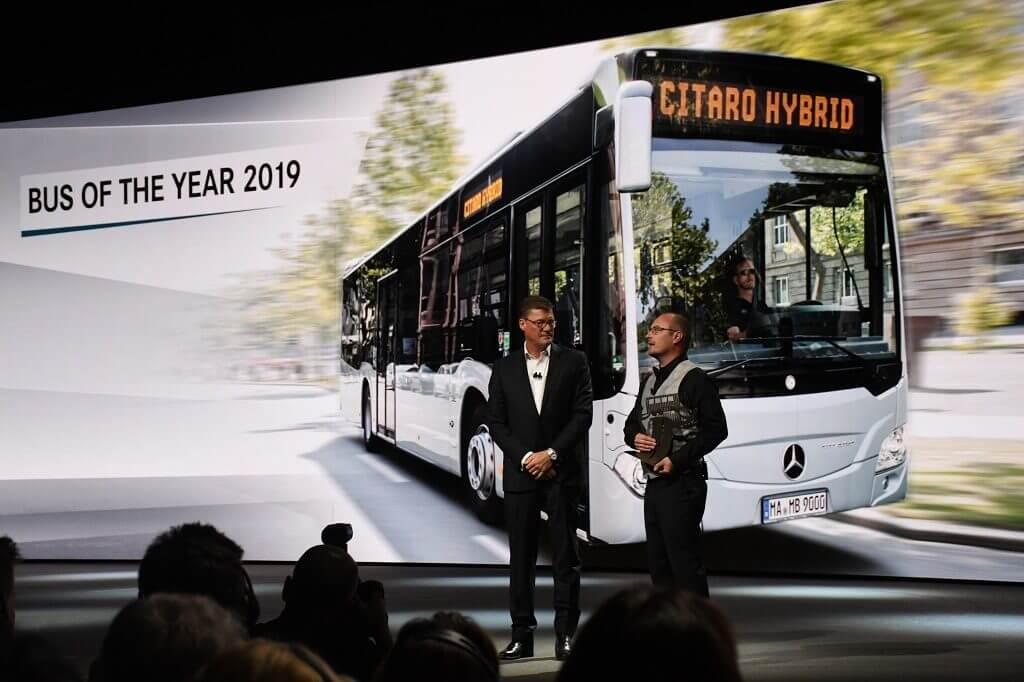
Despite the absence of several European bus manufacturers this time around, Germany’s biennial commercial vehicle show continues to impress and remains unquestionably a key event in the industry calendar. Andy Izatt and Richard Sharman report from IAA, Hanover
Bus of the Year 2019 is the Mercedes-Benz Citaro hybrid, which makes its right-hand drive debut at Euro Bus Expo next month.
Accepting the award at IAA, Hanover from Bus of the Year Chairman of the Jury Tom Terjesen was Head of Daimler Buses, Till Oberwörder who said: “We are now enabling operators to meet high environmental standards and at the same time work extremely economically. […]
By subscribing you will benefit from:
- Operator & Supplier Profiles
- Face-to-Face Interviews
- Lastest News
- Test Drives and Reviews
- Legal Updates
- Route Focus
- Industry Insider Opinions
- Passenger Perspective
- Vehicle Launches
- and much more!


